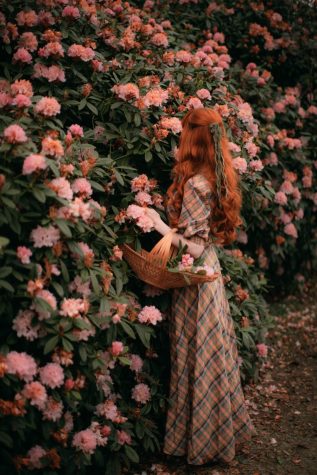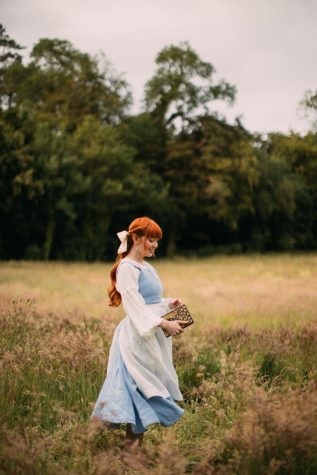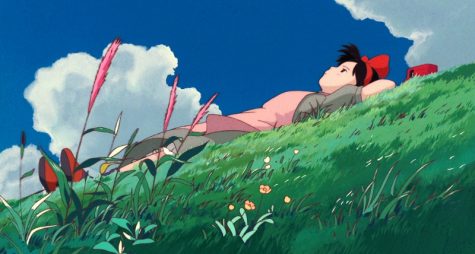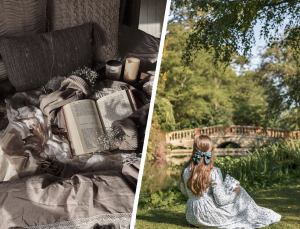Cottagecore
January 27, 2021
“Stop trying. Take long walks. Look at scenery. Doze off at noon. Don’t even think about flying. And then, pretty soon, you’ll be flying again,” said Ursula in the movie “Kiki’s Delivery Service” (1989).
As simple as this statement may seem, it is powerful because it reminds those of us who are often caught up in the busy pace of life that sometimes, we need to stop and appreciate the world around us. And perhaps, that is why these words appealed to those who identify as Cottagecore fans.
According to the Aesthetics Wiki, Cottagecore, commonly referred to as Farmcore or Countrycore, is an aesthetic inspired by the romanticization of the eurocentric “cottage” and rural lifestyle. It is centered around simplicity and escapism, advocating we reject our technology-obsessed world and instead, embrace nature.
View this post on Instagram
Cottagecore carries both traditional and progressive values, as it stems from the idealization of agrarianism. Since Cottagecore takes inspiration from the 18th and 19th century white rural lifestyle, it naturally promotes other beliefs and values of the time period, such as the idea of a traditional wife (TradWife) who is expected to take on a submissive, domestic role in marriage. However, in contrast to these traditional ideals, Cottagecore is also widely popular with the women-loves-women (WLW) community because its theme of escapism parallels queer people’s desire to escape from a heteronormative society.
The Cottagecore aesthetic is well-known for the distinct fashion trends it has given rise to. Cottagecore fashion tends to stick to nature tones, such as various shades of green and brown, along with faded colors and pastels.

Just like its unique color scheme, Cottagecore also has telling fabrics and patterns, such as gingham and paisley. In addition, materials like lace and embroidery are often used to accessorize or spice up outfits.
Cottagecore aesthetic fashion, like many fashion trends, has a variety of staple outfits, which are discussed in the fashion blog A Clothes Horse. Many people who incorporate Cottagecore fashion into their style wear loose-fitting, flowy dresses and skirts. Ironically, while the aesthetic is centered around agriculture, many of its outfits would be impractical in a farming setting.
Peasant blouses and other tops with puffy sleeves are also common, along with linen aprons, which are garments commonly worn while doing housework.

In addition to Cottagecore’s fashion trends, it is also widely associated with many forms of media, including films, literature and music. “Kiki’s Delivery Service,” a Studio Ghibli movie released in 1989, is known for having similarities to Cottagecore.

The movie follows the life of Kiki, a young witch, who leaves home at the age of 13 to fulfill her duties as a trainee witch. During this time, Kiki starts her own delivery business and distributes products by broomstick.
There are numerous hints of Cottagecore throughout the film, such as the cottage-like house Kiki lives in that is surrounded by greenery. On top of that, a major theme of the movie is escapism, as indicated by its glorification of menial tasks.
Other popular movies that are associated with Cottagecore are “The Secret Garden” (1993), “Moonrise Kingdom” (2012) and “Little Women” (2019).
Cottagecore, which saw its rise on Tumblr in 2018, has grown increasingly popular on social media platforms, racking up over 1.2 million posts on Instagram under #cottagecore. Many admirers of the aesthetic have dedicated their entire feed to Cottagecore, posting content that depicts their take on Cottagecore fashion or botanical destinations.
View this post on Instagram
View this post on Instagram
However, Cottagecore does have its flaws. One major issue with Cottagecore is its association with Western agricultural lifestyle and as a result, European colonialism, which leads to a lack of diversity due to the adherence of a white image, according to Abby Fritz’s “Cottagecore: The Comeback and Controversies.”
While the Cottagecore aesthetic prides itself on being non-capitalist and a supporter of self-reliance, its foundation on stolen indigenous land negates such claims.
Cottagecore has also been criticized for its simplification of agricultural work, portraying it as a mere aesthetic rather than depicting the intensive labor and dedication farmers endure. Additionally, because Cottagecore is founded on an older, eurocentric lifestyle, several fans have misinterpreted the aesthetic as promoting traditional values and beliefs, such as anti-feminist gender norms and the idea of TradWives.
Even though Cottagecore has its shortcomings, it has influenced many people worldwide, providing an outlet for individuals to appreciate nature and the surrounding world.
















